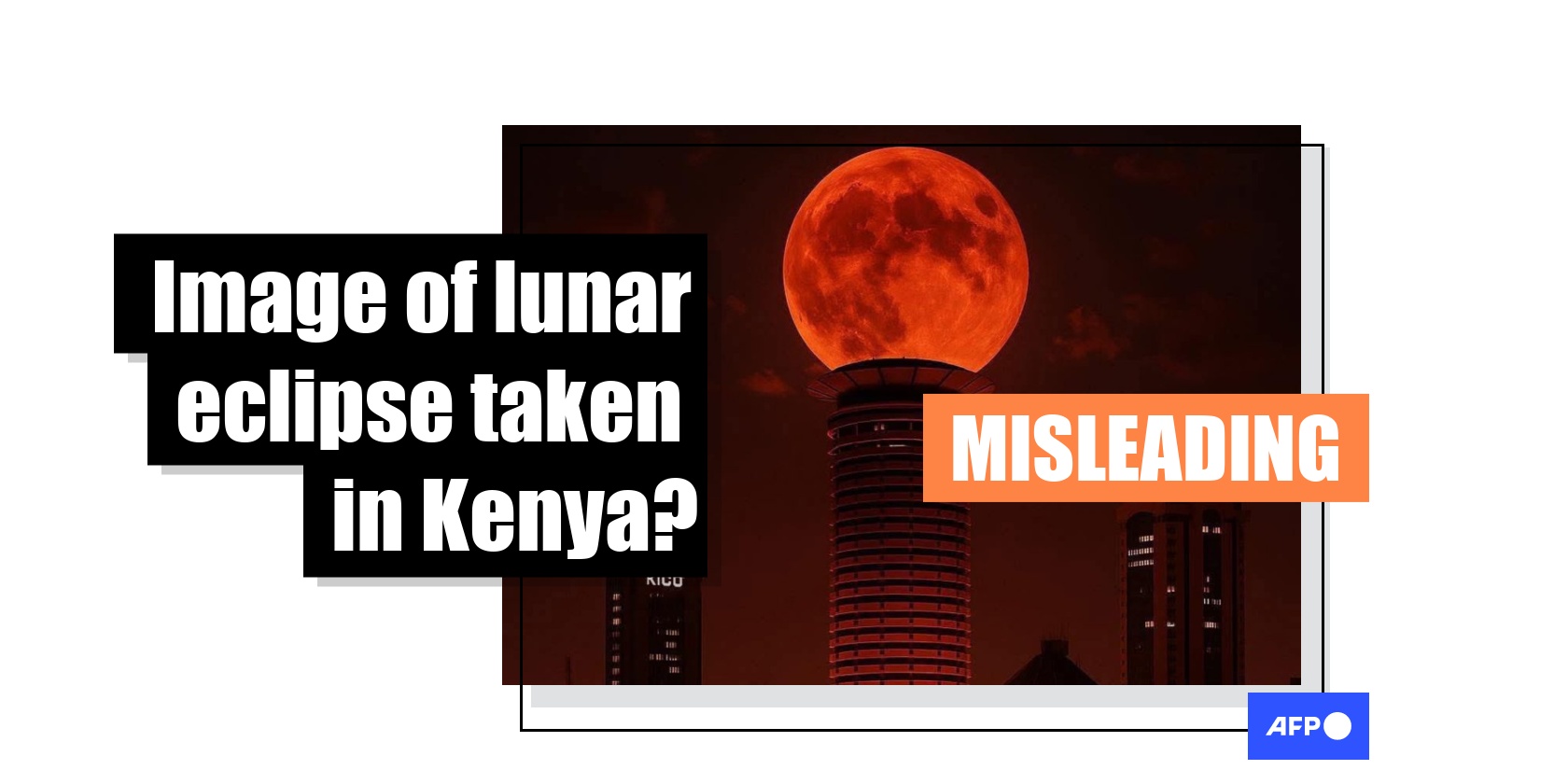
Fabricated image falsely linked to blood moon sighting in Kenya
- Published on September 16, 2025 at 17:29
- Updated on October 7, 2025 at 11:17
- 5 min read
- By Peris GACHAHI, AFP Kenya
“Lunar eclipse on top of KICC building in Nairobi (sic),” reads an English and Swahili Facebook post published on September 7, 2025.
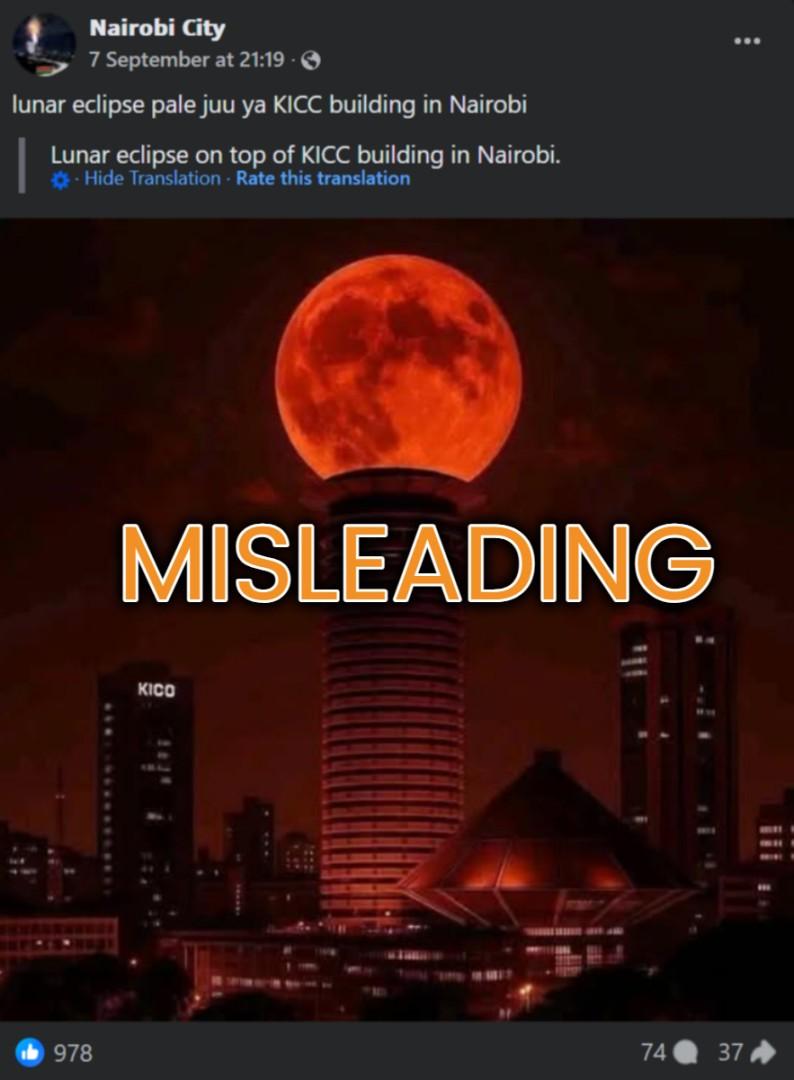
The image shows the supposed blood moon just above the KICC tower, casting a reddish glow over the scene.
Some commenters on the Facebook post appeared to believe it was real.
“Salute to the person behind the idea of taking the shot,” one user wrote.
“As Kenyans we are very blessed. Even the moon has shown some love resting on KICC before moving (sic),” another added.
The image was also published elsewhere on Facebook , X and Instagram with similar claims.
Blood moon
A lunar eclipse is an astronomical phenomenon which occurs when the Earth passes directly between the sun and the moon, casting its shadow on the moon (archived here).
The name blood moon refers to the reddish hue seen during a total eclipse and is caused by Rayleigh scattering, whereby sunlight passing through Earth's atmosphere gets scattered, filtering out blue light and letting only red light reach the moon (archived here). This is the same effect that causes sunrises and sunsets to glow red.
On September 7, 2025, Kenya was among the countries that witnessed this rare spectacle, with the blood moon visible for over an hour in the night sky. Public viewings took place in different parts of the country, including at Nairobi’s KICC building (archived here and here).
However, social media posts circulating an image claiming to show a gigantic-looking blood moon perched atop the KICC are misleading.
Fabricated image
Close inspection of the image reveals several inconsistencies.
While the KICC’s cylindrical shape is recognisable, the moon is unrealistically oversized and appears to cast its reddish glow over the entire city.
The skyline details are also inconsistent with reality. For instance, the building with the “KICO” signage does not exist. Also, the tower to the right of KICC does not quite match the building that occupies that spot in the skyline in reality, Times Tower -- in the image shared online, the top has a more curved design, and the building's lighter-coloured vertical bands are located on its corners rather than on its flat sides.
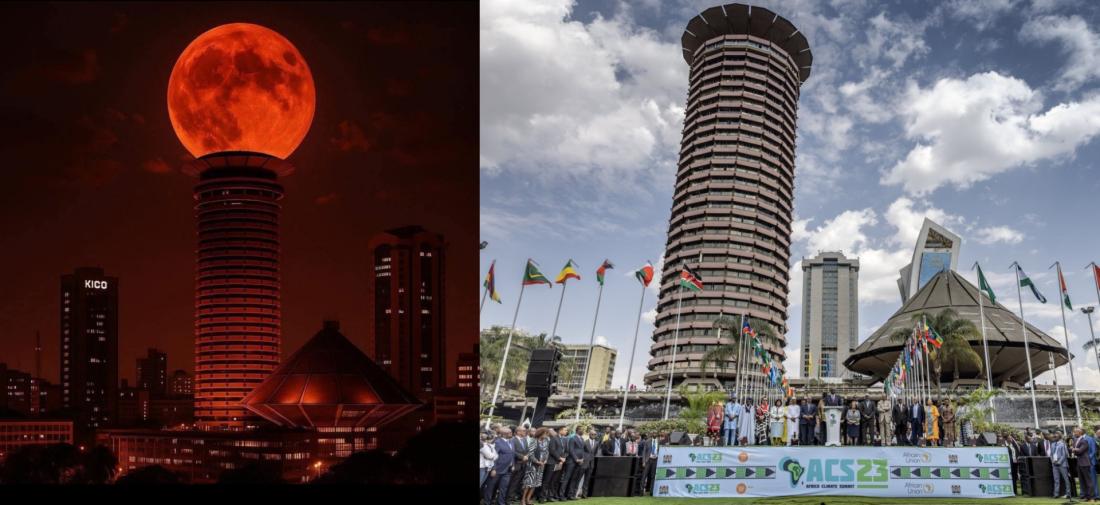
This can be seen clearly on Google Street View.
Kenyan photographer and filmmaker Peter Ndung’u published photos of the blood moon from the KICC on Instagram on September 8, 2025 (archived here and here).
“I wanted to frame the moon with an iconic part of Nairobi. Thankfully KICC had scheduled a public viewing allowing the perfect opportunity to use the tower to frame the moon for something different than a standalone moon shot,” he wrote in part.
In these authentic shots, the moon appears much smaller and more realistically scaled above the KICC compared to the exaggerated version shared on Facebook.
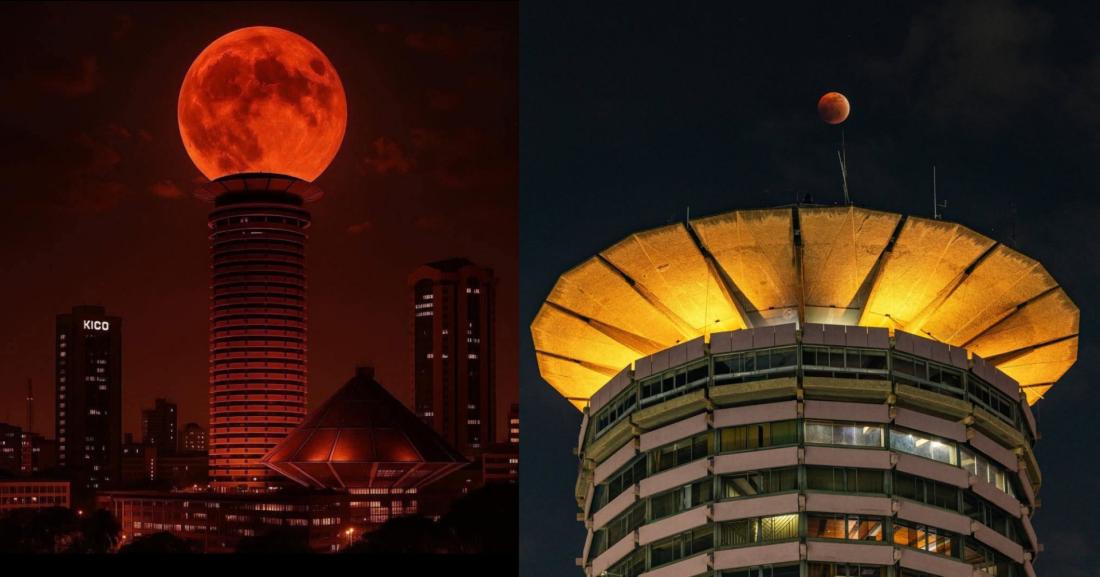
We analysed the image using AI-detection tools, and the results strongly suggested that it is synthetic.

AFP also documented the blood moon phenomenon from Kenya’s Samburu county, where the country’s tourism ministry and the Kenya Space Agency launched an initiative to promote astro-tourism (archived here).
Astro-tourism is travel focused on experiencing celestial events such as eclipses, meteor showers and stargazing, as well as visiting observatories and planetariums (archived here).
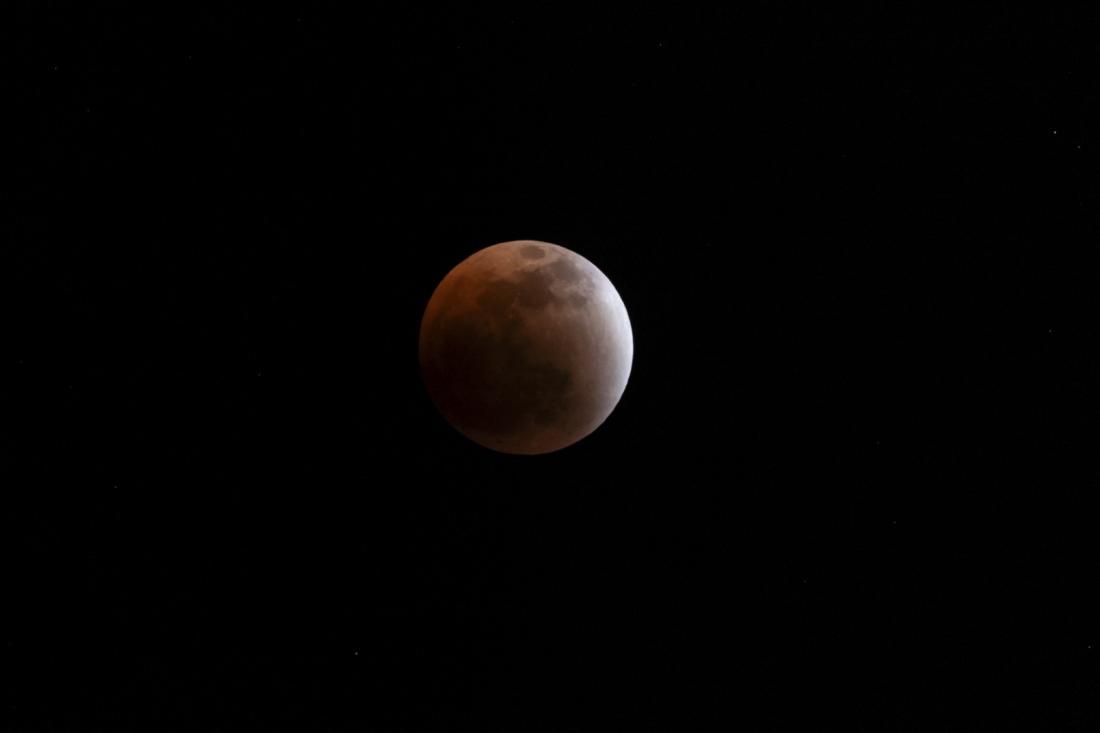
According to the National Aeronautics and Space Administration (NASA), the next total lunar eclipse is expected to occur on March 3, 2026, and will be visible across Asia, Australia, the Pacific and the Americas (archived here).
Copyright © AFP 2017-2025. Any commercial use of this content requires a subscription. Click here to find out more.
Is there content that you would like AFP to fact-check? Get in touch.
Contact us




